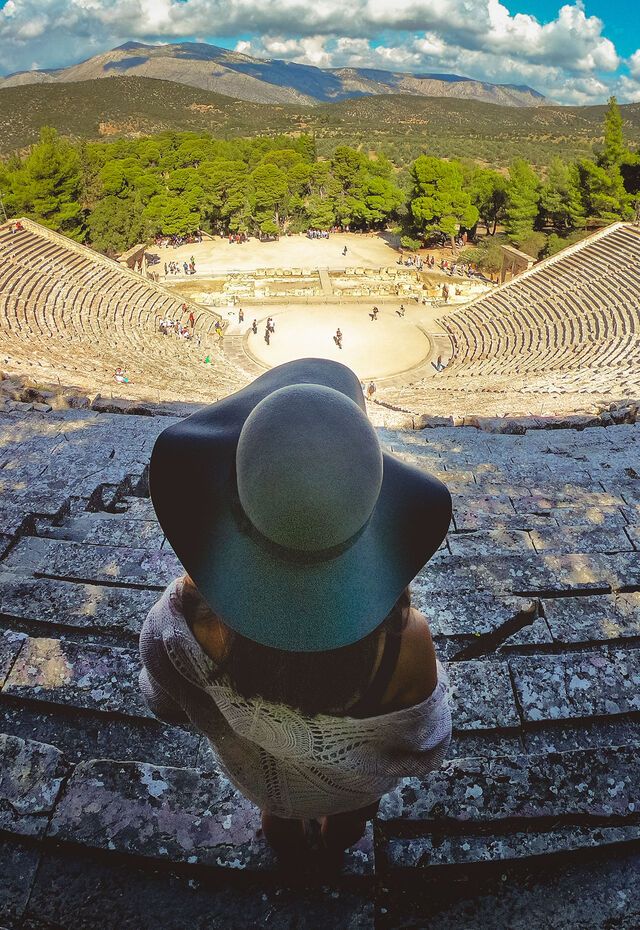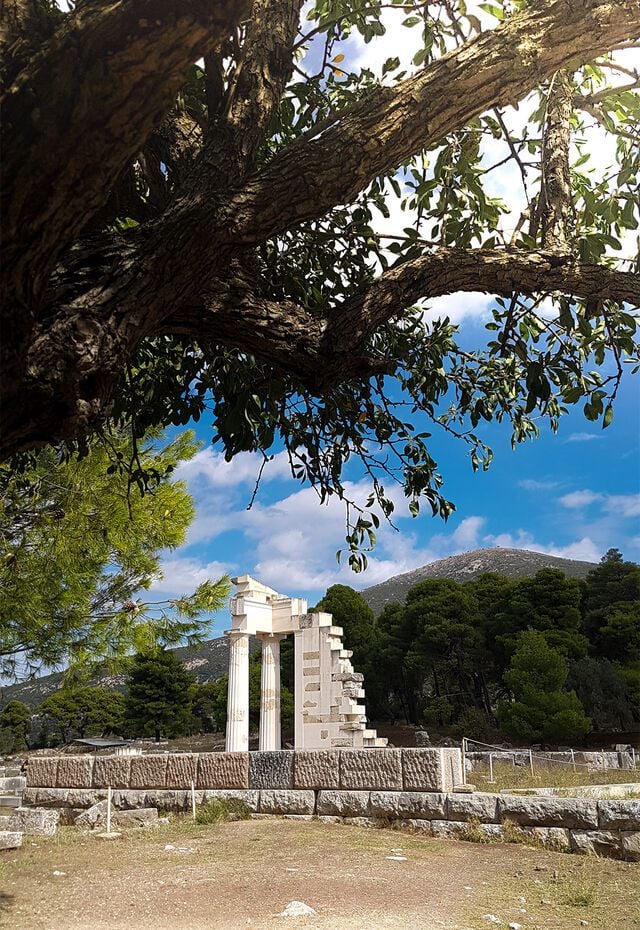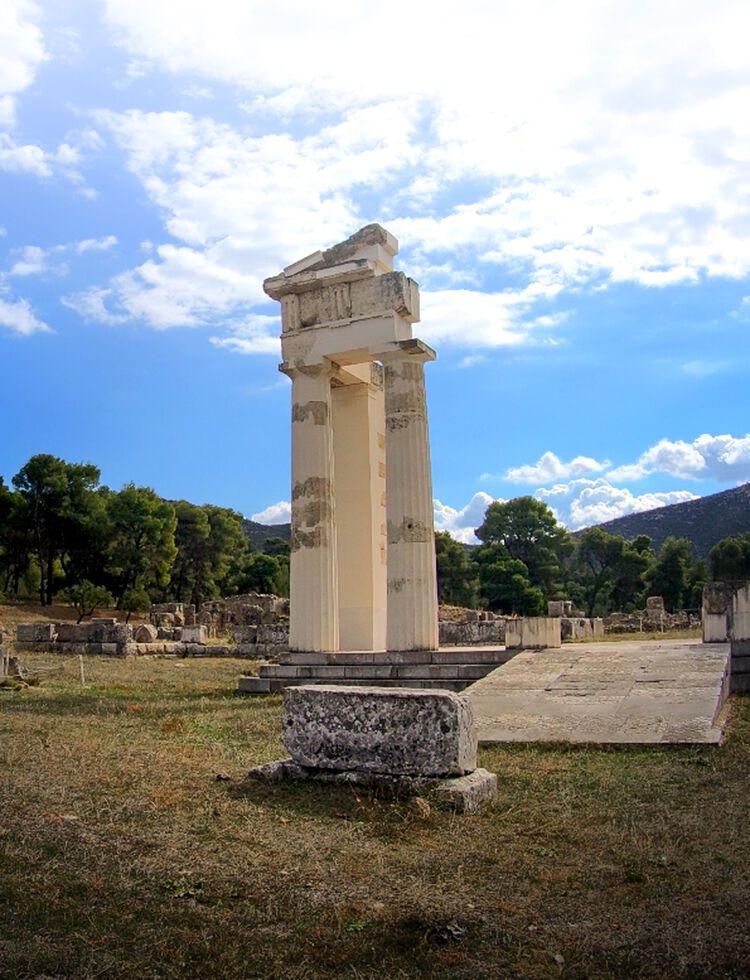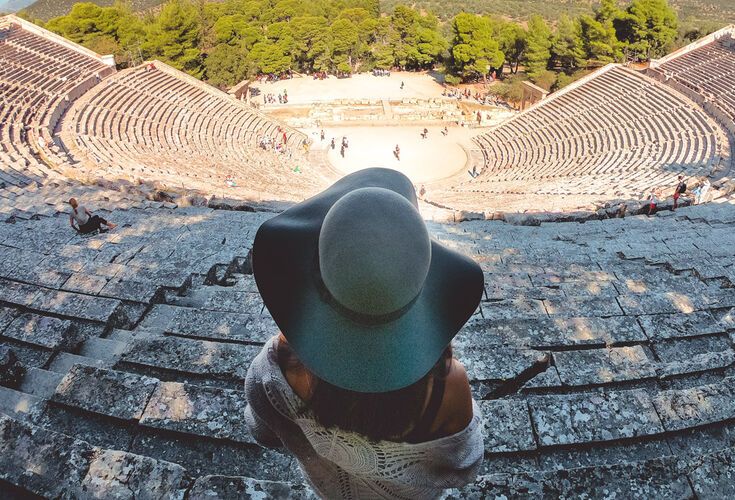Ancient Epidaurus, the original deluxe healing centre


OVERVIEW
The Asclepeion of Epidaurus was antiquity’s most famous sanctuary to the god of medicine. It gathered the injured and infirm from across the land who sought the therapeutic hand of Asclepius. But it was also a site of culture, with treatments being as much spiritual as they were physical, and the very location of the sanctuary – in a peaceful, pine-scented valley in the northeastern Peloponnese’s Argolida region – part of the effect.
Its most famous monument is the theatre – and rightly so because it is Greece’s best-preserved ancient theatre and one of the most perfect structures of antiquity. Its acoustics are unbelievable. If you stand in the centre and speak normally, you can be heard clearly in the back row.
From here, the sanctuary spreads before you: the elegant temples of Asclepius and Artemis and the enkoimeteria (a sleeping hall where treatments took place), as well as the guest house and recreational areas for patients, the palaestra (or gymnasium) and the stadium where visitors could exercise and revered athletes competed. And there is the site’s most enigmatic structure, the Tholos, a round building that was of uncertain function but undisputed artistry.
DON'T MISS
The theatre
Built in the sanctuary’s heyday, in the 4th-century BC during the Hellenistic period, the theatre originally sat 6,000 spectators. But as the renown of the Asclepeion grew, so did its theatre’s seating capacity, more than doubling over time. Essentially, it was a place of entertainment for patients, with theatrical productions being considered part of their therapy. And more than two millennia later, visitors are still enjoying the gift of the theatre’s acoustics and the setting, with reproductions of ancient tragedies and comedies.
The guest house
Continuing into the sanctuary, the first building you encounter is the so-called Katagogeion, essentially a hotel. So many visitors, so many patients, so many worshippers… they all needed somewhere to sleep and, naturally, the level was high. Even in our day, it would be considered a big building, with two floors and 160 rooms, some opening on to four courtyards filled with plants and trees. They were full-on luxury suites for those who didn’t want to sleep in tents. The dolce vita clearly had a place in antiquity too.
The Palaestra and Odeon
The large palaestra (like a gymnasium) was where patients could exercise as part of their treatment. But it wasn’t just patients who used it. This is where athletes who came to take part in games staged in Epidaurus worked out. And patients, in turn, enjoyed live sports events featuring the best athletes of the time. An Odeon was added in the previously empty main courtyard for new events brought by the Romans, such as pantomime and singing contests.
The stadium
The restored remains of the Stadium of Epidaurus are impressive. The more you explore the site, the clearer it becomes how important athletic events were to the therapy and recovery of patients. And just as in the palaestra, these spaces weren’t used just by patients. Everyone who gathered in the sanctuary for festivals and events, or to worship at the temples, watched the athletes competing.
The Temple of Asclepius
The god of medicine was actually born in Trikala, not Argolida. But as if the folk of Epidaurus would leave it at that? With the growing popularity of the sanctuary, it wasn’t long before new myths came into being and Ascelpius was soon a local. It would have helped in the marketing of the hospital! So it was only reasonable that the most elaborate temple of the sanctuary be dedicated to Asclepius. We can imagine how impressive the temple would have been from the exceptionally fine sculptures decorating it, many of which can be admired in the on-site museum and in the National Archaeological Museum in Athens.
The Tholos
Amongst the most mysterious buildings of the ancient world, the circular Tholos (known as the Thymele) would have been a structure of immense beauty and elegance. Some of its relics, preserved in the site’s museum, take the breath away for the perfection of their execution. We know that it was designed by Polykleitos the Younger, who wrote a book about it, describing the building and its use. Unfortunately, the book hasn’t survived and there is no other reference to the Tholos, so it remains an enigma yet to be solved. Prevailing wisdom supports the theory that it was the monumental tomb of an ancient hero, within which mystical ceremonies took place. Ongoing excavations, support this possibility.
Enkoimeteria (or Abaton)
Right next to the Tholos is the principal building, from a medical perspective, of the sanctuary. It was called the Enkoimeteria (or Abaton) and is where patients spent the night in order for Asclepius to come to them in a dream. The priest-doctors would interpret the dreams the following day and prescribe the therapy. We have many inscriptions referring to the “miracles” of Asclepius and legends spread far and side, such as that of the mute child. The doctors asked the father if he intended to pay for the treatment, to which the child replied emphatically: “Yes!”. As medicine developed throughout the Hellenistic period (323BC- 31AD) and beyond, superstition began to be replaced by therapies with a more scientific approach.
GET PLANNING
- The archaeological site is open all year round (except national holidays).
- The best period to visit is April to September to enjoy the nearby beaches.
- Ancient Epidaurus is the perfect addition to a road trip around the Peloponnese or a city break in Athens at any time of year.
- If you visit in June to August you can combine the tour of the archaeological site with a theatrical production during the Athens and Epidaurus Festival, as many have English supertitles.
Opening hours:
- Seasonal opening hours apply.
- April to August: Daily from 8:00-20:00. More info
- Autumn
- Spring
- Summer
- Winter
- You will need around 1-2 hours to explore the site and museum, depending on how much detail you want to go into.
- Tickets: €12 (reduced €6)
- There’s little shade and the archaeological site is expansive so don’t forget your hat, sunglasses and sunscreen and bring a water bottle.
- Wear comfortable footwear.
- If you aren’t staying in Athens, there are hotels and guest houses in the coastal town of Palaia (Old) Epidavros as well as tavernas and other amenities.
- Another great place to stay is Nafplio, from where you can continue your journey around the mythical Peloponnese.




